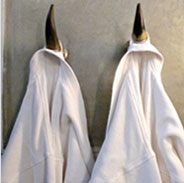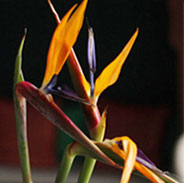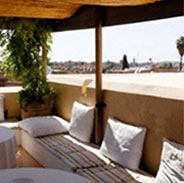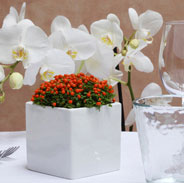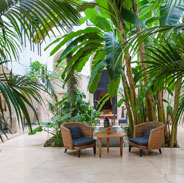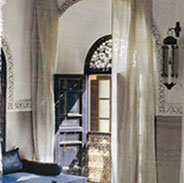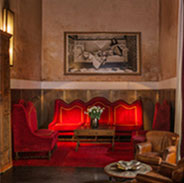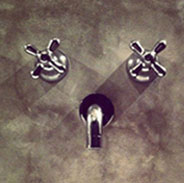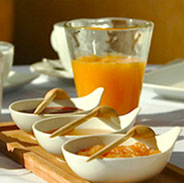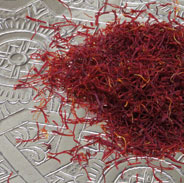Staying in one of our authentic Riads will help you fall into the rhythm of Marrakech, its culture, design, art and flavors. Rather than merely place to sleep, 72 Riad is an inspiring perch from which to comfortably embark on the mystery of Marrakesh.
The Riad experience
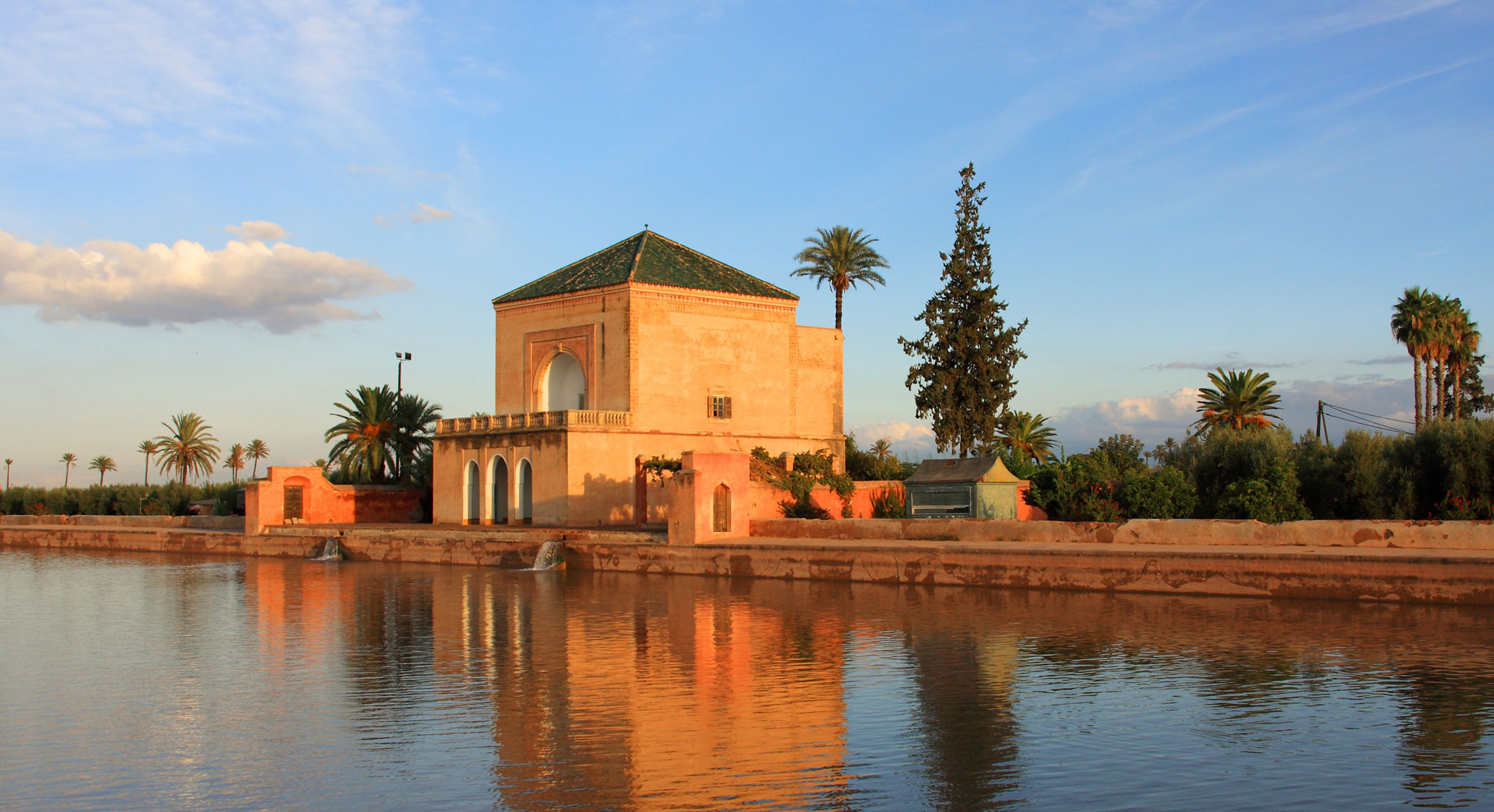


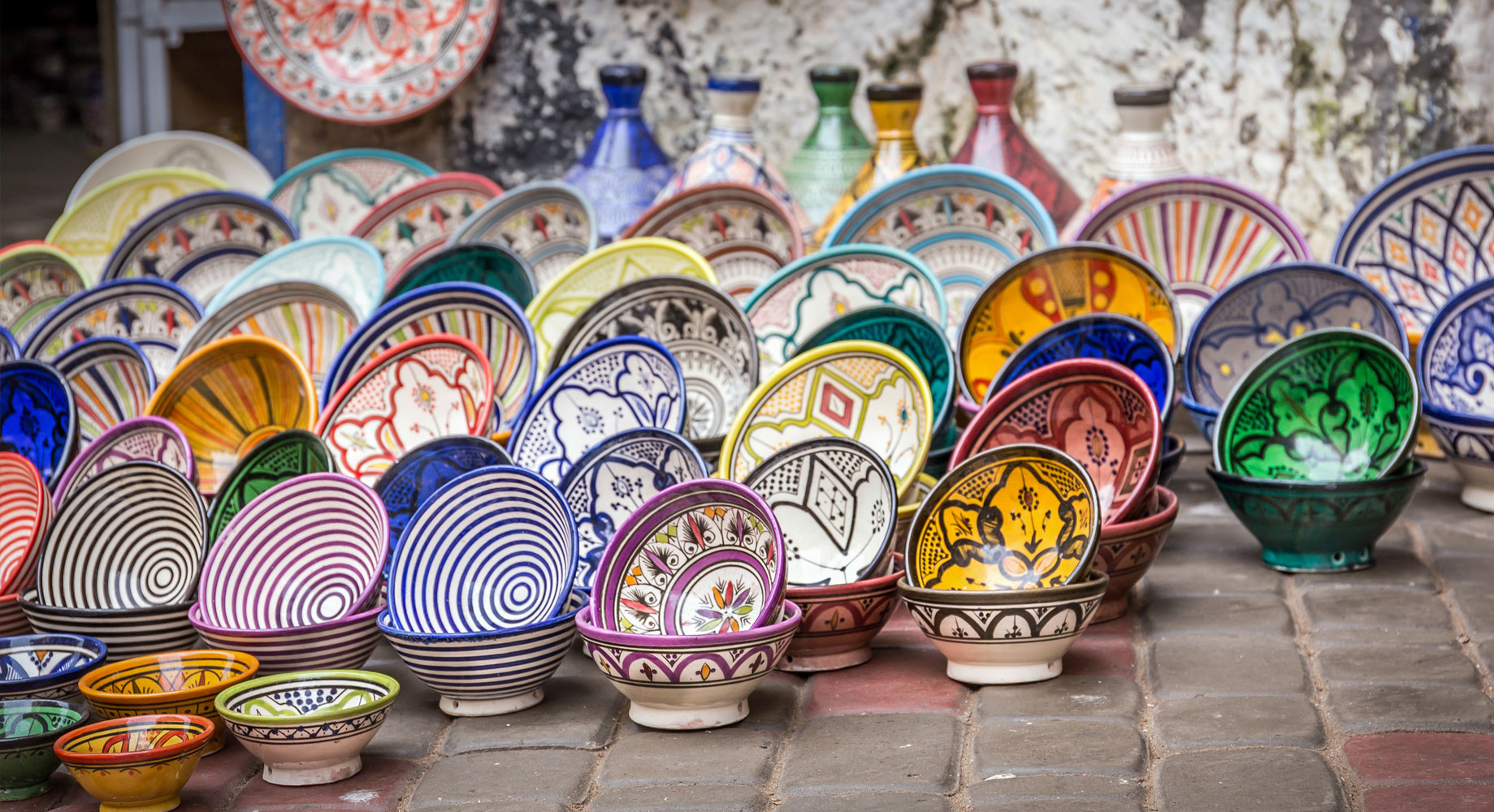
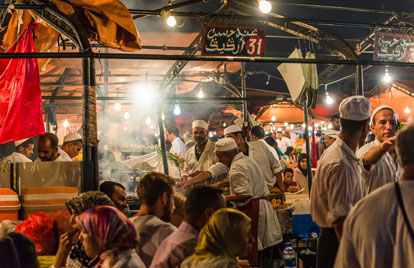
DESIGN
Many places boast of one or two unique artisanal crafts, but Morocco stands apart in the sheer quantity of mediums and styles.
There are endless amounts of one-of-kind styles and designs in ceramics, lamps, wood designs, leatherwork, and interior décor.
Many come to Morocco to learn the skills of the complexly designed metalwork, found in the brass vases, lamps and bowls around a Moroccan home. Probably the most memorable aspect of Moroccan design is the attention paid to crafting repeating geometric shapes, which give a kaleidoscopic feel.
Often these designs work with the light, as the sun moves throughout the day, the light reflects through these shapes in different angles on the walls around. Whether sitting in the courtyard of a Riad, or on a bench in the Medina, these designs are an aspect of every part of Moroccan life.
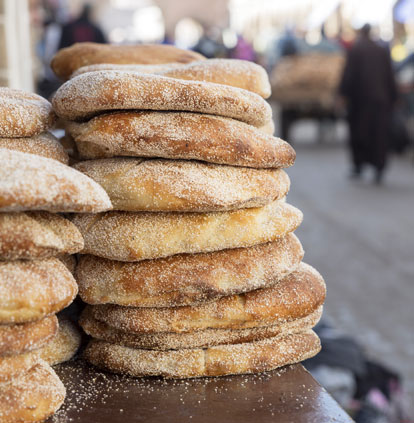
Morocco is unique in the Middle East and in the world for its distinct blend of cultures. The interweaving of European, Berber, and Arab influences results in an intricate and natural aesthetic shown through its hospitality, peaceful demeanor, and interior décor. Moroccans take a lot of pride from being good hosts and décor is part of this. The room where guests are received is often the most ornate.
We’ve written a few words to give you an idea about Morocco, to make sure you don’t miss even the smallest detail. As a whiff of musk passes by your nose, the tempo of the prayer touches your ears, and beautiful sunset sets behind a palm tree at the Koutoubia mosque, you know you’re in Marrakech.
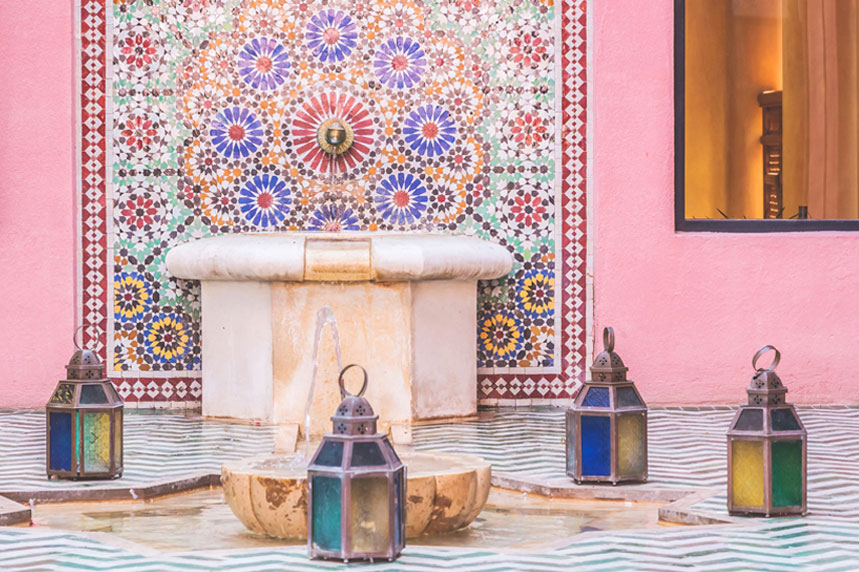
Moroccan food stimulates the senses as much as its sites and sounds do. Don’t miss out on the traditional and innovative culinary pleasures of this melting pot of cultures.
Moroccan cuisine is comprised by root vegetables, nuts and dried fruit, and lamb, chicken or fish all cooked to a tender texture and flavored lightly with olive oil. The tajine, the main dish of Morocco, is a couscous base dish with lamb or vegetables on top cooked for hours at low heat in a clay pot.
In addition to this Moroccan staple, there are street foods, like fried fish and calamari, and countless fresh salads. At the most lavish of meals, one can find a table filled with countless small plates of vegetables and meat, from eggplants, to cucumbers, to potatoes all cooked and seasoned in subtle and divine ways. Many options and clever ways to surprise and change the palate are commonplace in a decadent Moroccan spread.
A Riad is a Moroccan home, or palace, royal in its artisanship, ecologically friendly and intelligent in its architecture. From the outside, this traditional home is often marked by a basic door in an alley way, unassuming and modest.
However, inside the senses come in contact with the glorious and ceiling-less majesty inside. The courtyard is the centerpiece of this glory as natural light shines down into the building onto a plunge pool, intended to cool the surroundings on a warm day. Again, playfulness with light is important as the changing sunlight from the day reflects off the rippling water onto the walls of the courtyard. Looking down onto the enchanting courtyard is balcony all along the second floors with latticework windows. The rooms are all connected to this central space.
Courtyards often have gardens as well, representing the notion of a paradise garden in Islam, which is known for its fountains, open sky, and walls encapsulating it all. With the water spring at its floor and the open air at its heights, the structure represents the cardinal directions and a lifestyle integrated with the elements of nature.
This form was designed to safeguard homes and inhabitants from sandstorms and the hot sun. It has an added feature of giving a feeling of being inside and outside all at once.
The architecture of a Riad allows for natural heating and cooling as the cool floors, greenery, pool and shade create a cooler climate than the one outside the building’s walls, while the open sunshine warms the walls for a comfortable sleep on cooler nights.

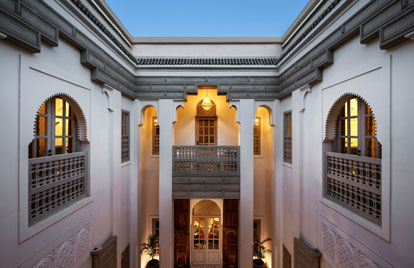
A RIAD
A Riad provides one of the few opportunities to experience a place and a time past.
A guest will have a sense of history that is often now only recreated in films and novels.
A Riad inspires its guests to experience an era when an artisan would spend hours handcrafting the perfect shutter, a beautiful lattice window cover, the tiles of a floor or wall, or the spectacular angles of a room. In order to have this authentic experience, there are no televisions or distractions in the room, just the quiet of the desert night and the reflected light of Moroccan brass lamps.
